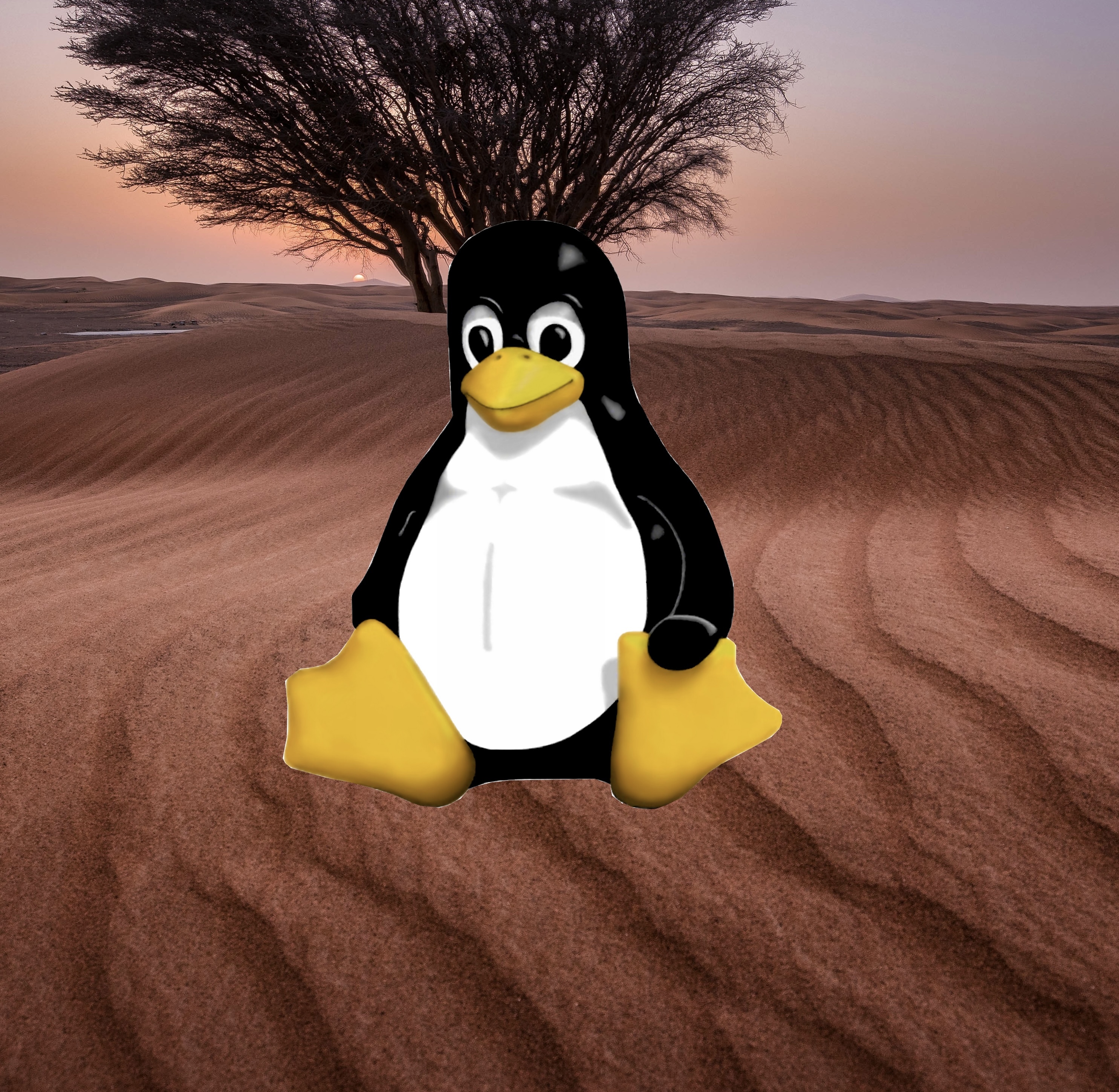For context:
I’ve been using Linux since 2000. Started with Mandrake Linux (Helios?), then I moved to Ubuntu in 2004 and alternated between Ubuntu, Kubuntu, Ubuntu MATE for a time until I settled with Kubuntu for the last few years.
Ubuntu has been rock solid for me for the past 20 years and I’m used to the APT package management and Ubuntu/Debian environment overall with all the various services and configs, setups and release cycles, etc. The stability allows me to enjoy my spare time playing games and doing other important tasks instead of troubleshooting my system and figuring out how to make something work. Ubuntu has been awesome in that regard.
I’ve also been dual-booting this whole time with Windows. Gaming on Linux simply wasn’t up to snuff up until very recently with Steam working on Wine and Proton for the Steam Deck and Bottles, which makes running Windows games on Linux almost comparable to Windows.
Windows 10 was a great OS, except for a few flaws and privacy issues with the introduction of mandatory Microsoft accounts and One Drive integration. But you could work around those things. It was supposed to be the last Windows we would have to install with perpetual rolling releases, but apparently they changed their minds about that. Windows 11 was released and reading about it gives me nightmares. Using it for work also has been an incredibly buggy and frustrating experience. The invasion of privacy, data collection, screen monitoring and AI integration plus the additional advertisement are all reasons for which I will never install this OS on my personal computer. And some of these features have started to leak into Windows 10.
So I’ve made up my mind. I’m wiping Windows from my PC and will be running Linux only. I believe it’s become good enough to use as a daily driver for a home gaming desktop and for productivity. But… Which distribution should I choose?
The dilemma:
There’s been a whole slew of new Linux distributions that have come out lately. Some have been early in the Linux gaming aspect such as POP! OS. Others have tried to become a solid replacement for the default immutable Steam OS such as Bazzite. And there are now some pretty awesome sounding gaming-focused distros such as Nobara. And that’s on top of the various existing Ubuntu flavors, Fedora’s spins, OpenSuse and the many Arch variants that almost seem to pop up monthly.
I’ve been shopping around for a distribution to become my daily driver from now until who knows when. I’m expecting to stick to that distro as long as possible. Here’s some of the things that I am looking for:
- Not immutable : I find this to be adapted for devices like tablets, IoT devices and handhelds instead of an actual PC. I’ll need to be able to change my system configs as I please and an Immutable distro seems like a pain in the butt to deal with that.
- Rock solid : This is the most important aspect and is why a lot of the Arch or other bleeding edge distros won’t do. (With some exceptions)
- Hardware support : The second most important aspect. I think that’s pretty much covered by most popular distros, but some have better support than others. Especially for ease of getting the right drivers. (Especially for NVidia GPUs, or gaming controllers and devices.)
- Performance : Most popular distros offer ok performance, but some have been enhanced to provide improved performance according to the hardware. This is a very big nice to have, especially for gaming.
- Desktop choice : I’m really not a big fan of Gnome 3. It seems nobody really is. Many Gnome based distros come with quality of life extensions out of the box to fix that. Not a big fan of GTK apps’ UI ergonomics either. That’s why I prefer KDE over Gnome or Cinnamon. Budgie seems like a great alternative as well. Also having a PowerToys-style FancyZones tiling system is a big big plus (KDE has that OOTB)
- Applications : The thing I love about Ubuntu is the amount of available applications in their repos. I’m hoping to have the same availability in my next distribution.
- Online community/support : Having a great online support community is very important. The more users, the larger the knowledge base and the easier you can find answers to questions to troubleshoot problems.
- Online services integration : Optional but a very nice to have would be to have integration with Google apps like GMail, Calendar, Keep and Google Drive to name a few.
- Customization : As funny as this sounds, I want to use the desktop in its most vanilla form as possible with as few customisations as possible. Over time I found that having extra customisations like extensions, applets, etc tends to break things because of lack of support over time. It’s also more difficult to troubleshoot when very few people are using them.
The distributions that ended up meeting my requirements are the following in order of preferences :
- Kubuntu : So far its been working great for gaming but I think there could be some performance improvements. It’s my first choice because I’m just so comfortable with it already. Zero effort, but with some compromises in performance.
- Nobara with KDE Plasma : This looks solid and ticks all the requirements. I think there’s some amount of learning to do for using YUM/RPM packages and to understand some of the customisations, but I think this effort will be minimal. I am concerned about long term support however since this is a fairly new distro supported by individuals.
- Ubuntu Budgie : I really like this DE, very simple but elegant. But, like Kubuntu, I don’t know how it’s going to fare performance wise. And I don’t know what kind of tools there are to configure gaming controllers, etc.
- Ubuntu (I’m willing to deal with Gnome 3 for simplicity’s sake)
- Fedora KDE Plasma spin : Everybody is raving about Fedora so maybe I’ll give it a shot as an Ubuntu replacement.
ManjaroEndeavour OS with KDE desktop :Possibly the only Arch distro I’m willing to install because they focus on stability, however learning about the packaging system and configs/environment feels like a drag. But with the great community and documentation I’m willing to make an effort for this one.
What are your thoughts on this? What are your recommendations based on my requirements?
EDIT:
Thank you very much for everyone’s input. I’ve spent a good part of the day installing distros in a VM to check out some of your suggestions and reading more about my choices.
I can’t believe I am saying this, but I am reevaluating my choice of using Kubuntu. After some reading I have found out that Ubuntu and it’s flavors will not be supporting flatpaks starting in 23.04. And there are several known problems with snap, such as serious performance issues. A task that would take 1-5s as a regular .deb installed app, would take up to 10 times that time to complete. Canonical is also working to modify apt to use snaps instead of installed .deb packages. They are aggressively pushing snaps to a point where they’ll want to replace the majority of the software with snaps eventually.
Yeah there’s security features built-in and all, which flatpaks don’t necessarily have. And the security is tighter around Canonical’s snap repos compared to flathub for example. But I don’t know if I’m ready to move to that new way of doing things. And Canonical is going against what the community wants.
I don’t know. I think I’m more confused now that I was when I started…
A bit off topic, but I have been using Arch for over a decade now, and it has been pretty stable for me. My only issue in last few years were if my kernel got updated which needed updated nvidia driver, and I rebooted before noticing that. (Very old laptop, so nvidia drivers for this aren’t in repos, hence the issue). I didn’t use it for gaming though (very old laptop, wouldn’t even run old games)
BTW I recently went the opposite way, have been using only Linux for over a decade but got a new laptop a month back and kept the windows as a dual boot, though my main interest is to use it only for MS/Xbox first party games, that don’t have Linux support. Saving me from buying a separate Xbox.
Oh yeah! I haven’t really thought about this. The only MS game I ever bought was Forza Horizon 4 to practice left-side driving before a trip to Scotland. Hahahahaha!
So you’re saying it won’t work in Linux?
No idea tbh. I mainly play on consoles, and until a few days back I didn’t even know Xbox publishes game on Steam too. Will have to check protondb. Will take a look.
My recommendation would be setting up Nobara with a separate home partition so you can easily switch if it stops being supported, although there are no sign of this yet. My second recommendation would be Opensuse Leap, it is more stable and well established but less optimized for gaming. Maybe take another look at Pop OS! when they release their independent new desktop. If you go with base Fedora be aware setting up codecs can be annoying. Avoid Manjaro, the distro breaks a lot due to dependency conflicts. Also I think you mean GNOME 40, GNOME 3 is the old design.
Also I think you mean GNOME 40, GNOME 3 is the old design.
Time flies! Yeah since Gnome 3, I’ve snubbed Gnome because I hated its new desktop UI. I’ve lost track of what version they are at since then.
Gentoo
Hahahahahaha
I’ve always associated Gentoo users with car tuners buying a 1998 Honda Civic and tuning the crap out of it for max performance. Sure the car will look rad with all the big spoilers, neat paint job and rims with parts that provide an amazing performance that pushes the car’s limits. But you’ll have spent a few years building it.
No offense. I do admire the work that goes into customizing and compiling your whole OS that way, but it’s not my cup of tea.
Jokes aside, you can do different stage installs where you don’t have to compile the whole OS. However I feel like the quality has dropped during the past few years and it requires too much tinkering. Back when everything was on spinning rust, the performance difference was very noticeable though.
This might not help, but I’d seriously recommend reconsidering Arch derivatives.
I’ve been 100% Linux for almost 2 years now, with Garuda Linux on my primary desktop and Fedora on my laptop. I’ve had zero major issues with Garuda (and very few minor ones, to the point I can’t think of any specific problems in the moment), gaming performance has been fantastic, and the availability of software in the AUR is nothing short of amazing.
In my experience, keeping up with updates is not at all an impediment to use, and I’ve yet to have stability issues of any kind. I’ve been seriously considering replacing Fedora with Garuda on my laptop, the experience has been so smooth.
Just stay away from Manjaro. I feel like Arch fan-boys being dicks and people recommending Manjaro to new Linux converts are the only two problems with Arch (or at least its derivite distros, I haven’t raw dogged vanilla Arch before).
I think it’s important to keep in mind here that there is a very marked difference between vanilla Arch and its derivatives. A lot of derivatives will set up a lot of base system software with sensible defaults, whereas with vanilla Arch it’s often up to you to find out that you need that software, and then you also need to figure out a lot of configuration. Not having to do that saves you from a lot of issues.
Nobara is nice.
Since your main priority is stability, I’d suggest either Debian Stable or Mint. Debian Stable is rock solid, but the software is ancient; Mint is a good compromise. They both have a nice package selection.
The reason why I don’t recommend Ubuntu itself is snaps. Huge downloads with lots of wasted disk space, wasted memory, less user control, mismatching themes, larger loading times… urgh.
Desktop environment is such a personal matter that it’s hard to say which one would be the best for you. I’m a big fan of MATE - it’s small, it’s nice, you can reasonably customise it without new extensions or applets. Xfce would be also a good performance-focused choice.
I agree about the Snaps. But isn’t it kind of the same deal with Flatpaks? The whole objective is to deliver the application with all its dependencies packaged in, and running in a pseudo fenced environment. So of course it will take up more storage space. The speed issue is because some of these are compressed to take up less space. It’s a compromise.
Worst case, you can disable snaps easily. But, I’ve found using Snaps and Flakpaks somewhat easier, especially for when it comes to removing the software. I dunno. I might stick with Kubuntu or even Ubuntu Budgie. (Still testing some distros out in a VM.)
The problem is that Ubuntu overuses snaps, even when there are completely acceptable .deb alternatives, that will perform consistently better; typically distros using appimage and flatpak don’t do the same.
That said if this isn’t a big deal for you Ubuntu might be still an option. As the saying goes, better the devil that we know.
Yeah you’re right. It’s funny that you answer now because I just read about what they plan to do here. It’s pretty disappointing.
I don’t know if I’ll be continuing with Kubuntu or any Ubuntu based distro at this point.
I’ve played around with OpenSuse Tumbleweed today and it looks rock solid. The YaST app looks like it has a lot of extra configs.
Fedora KDE looks like a good alternative also. But people expressed some frustration about installing 3rd party codecs and such. I think OpenSuse has an option to easily install those.
I can’t believe I’m considering moving away from Ubuntu after 20 years…
I can’t believe I’m considering moving away from Ubuntu after 20 years…
The good news is that all distros are pretty much similar to each other, so you can transpose most of those two decades of experience to any other distro that you might want to use. Typically the key differences are
- defaults - including the desktop environment
- package manager and format - YaST vs. APT vs. RPM etc.
- stability vs. newer software continuum - different distros aim for one, another, or a balance between both
+1 for Fedora KDE. I’ve been daily driving it for 2 years now and its given me very little problems. I stopped using Windows about 5 years ago now and haven’t looked back, and after distro hopping for a bit, I’m pretty satisfied with my experience with Fedora. Initial setup can take a little bit because theres some repos you need to add/enable to get nonfree software (including video/audio codecs that basically every website ever uses), but once you do that its pretty solid. You get pretty up-to-date software without it being so new that things break after every other update. It strikes a nice balance.
However, if you’re familiar and comfortable with Ubuntu, you’ll likely be just fine sticking with that. You probably won’t notice huge performance differences between distros. It sounds like the bigger concern is if you’re safe to just nuke Windows and I’m not going to be the one to discourage you from doing that. Up to you if you want to try something new or not.
Same boat, fedora + kde, solid experience all around. Love Fedora and really enjoying KDE, though im facing some minor gripe on my laptop with the power management which always seems to kick in max performance when plugged in despite all possible tweaks I have tried (tlp, powertop and the native power management settings).
I’m not sure what performance improvements you’re talking about. As far as I’m aware, the difference between distros on performance is extremely minimal. What does matter is how up to date the DE is in the distribution provided package. For example, I wanted some nvidia+Wayland improvements that were only in kwin 6.1, and so I switched from kubuntu to neon in order to get them (and also definitely sacrificed some stability since more broken packages/combinations get pushed to users than in base ubuntu). It’s also possible that the kernel version might matter in some cases, but I haven’t run into this personally.
I think the main differences between distros is how apps are packaged and the defaults provided, and if you’re most comfortable with apt based systems, I’m not sure what benefit there’s going to be to switching (other than the joy in tinkering and learning something new, which can be fun in its own right).
For some users less experienced with linux, the initial effort required to setup Ubuntu for gaming (installing graphics drivers/possibly setting kernel options, etc) might push someone toward a distribution that removes that barrier, but the end state is going to be basically identical to whatever you’ve setup yourself.
The choice between distributions is probably more ‘what do I want the process to getting to my desired end state to be like’ and less ‘how do I want the computer to run’.
I’m not sure what performance improvements you’re talking about. As far as I’m aware, the difference between distros on performance is extremely minimal.
Maybe. But according to the Nobara homepage, they have added a number of kernel patches to the kernel and other performance tweaks that’s provided with their distro out of the box. This could be an advantage for a gaming-focused PC use. From what I hear, these little extras can provide quite a few more frames per second
And as far as the whole X11 vs Wayland thing, as long as everything works I’ll be happy. And for now, that seems to be with X11 until absolutely everything works with Wayland, which is not the case from what I read online.
The difference between Debian/Ubuntu and RedHat/Fedora isn’t huge. APT and YUM work fairly the same way. I don’t think that’s a big learning curve, especially since I’ve worked with YUM in the past for work. And I’d be sacrificing Snaps which isn’t a big deal for me.
All those patches seem like nice things to have, but are more focused on adding hardware support and working around bugs in software/other people’s implementations. If you have one of the effected GPUs/games/etc, then those patches probably make a huge difference, but I’d guess there won’t be noticeable frame rate differences on most systems. I have not tested this claim though, so maybe something on there makes a big difference. What’s nice is all the packaging stuff they’ve done to make setting things up correctly easily, not necessarily most of the changes themselves. Like on my system I compile dxvk and various wine nvidia libs myself since Ubuntu doesn’t package them. And it’s easy to screw that up/it requires some knowledge of compiling things
Reading your update, I’d still choose whatever distro packages the software you want with the versions/freshness you need. If you’re willing to tweak things, then the performance stuff can be done yourself pretty easily (unless you have broken hardware that isn’t well supported by the mainline kernel), but packaging things/compiling software that isn’t in the repositories is a huge pain. I think this is one of the reasons people choose arch even with its need to stay on top of updates. Is that the AUR means that you don’t have to figure out how to build software that the distribution managers didn’t package. Ubuntu’s PPAs aren’t great (though I don’t have personal arch experience to compare with)
Like on my system I compile dxvk and various wine nvidia libs myself since Ubuntu doesn’t package them.
Huh?? I’m using Kubuntu 24.04 right now and didn’t have to jump through these hoops. That’s weird.
but packaging things/compiling software that isn’t in the repositories is a huge pain.
I don’t know. I’m a developer that’s been using Ubuntu distros for 20 years and never ran into such issues.
Thank you for your feedback. I agree with you. In hindsight, Nobara doesn’t bring that big of an advantage. And I further discovered that it’s a one-man project. So that’s not so great for long term support and continuity.
I think I’ll have to make another post about my findings or write a guide or something. I’ve learned a lot, especially because of everyone in this thread. I really opened my eyes and broke down some preconceptions I had about certain distros.
Huh?? I’m using Kubuntu 24.04 right now and didn’t have to jump through these hoops. That’s weird.
I compile them because I want to use them with my system wine, and not with proton. Proton does that stuff for you for steam games. This is for like CAD software that needs accelerated graphics. I could probably use like wine-ge and let GE compile it for me, but I’m not sure they include all the Nvapi/cuda stuff that’s needed for CAD and not gaming. If there’s an easier way to do it, I’d love to hear! Right now I’m using https://github.com/SveSop/nvidia-libs
I’m a developer that’s been using Ubuntu distros for 20 years and never ran into such issues.
If you’re a developer that’s comfortable with desktop software toolchains, that makes sense. (And checkinstall is wonderful for not polluting your system with random unmanaged files). But I came at this knowing like embedded c++ and Python, and there was just a lot of tools I had to learn. Like what make was and how library files are linked/found, etc. And for someone who’s not a developer at all, I imagine that this would be even harder.
I’ve learned a lot, especially because of everyone in this thread
I’m glad!
For your desktop apps that need 3D acceleration, I’ve been using Bottles. It’s such a great tool for Wine.
I’ve configured Wine environments for 3D accelerated apps and even some pirated games just to see if they worked
You can select what Wine you want, Proton, Soda, etc. Set environment variables, override DLLs and much more.
Thanks I’ll check it out! From a brief search it looks like at the moment I’ll still have to use the nvidia-libs repo to get cuda: https://github.com/bottlesdevs/Bottles/issues/3301
I see mostly Tumbleweed on protondb. I myself am on my 4th attempted transition and keep borking my system. So take my input with a bucket of salt but its making me think of trying it.
I mean the idea of install once, upgrade never is extremely appealing.
What do you mean by you are on your 4th attempt? On Tumbleweed?
No, sorry that was confusing. I first used Mint on my desktop after liking it on my work laptop. It worked alright, then I went to Ubuntu and hated it so tbh I didn’t even finish messing with it I just installed Arch over it. I really like arch, but I can’t get my games running on it. I have a few bookmarked comments with helpful advice that I need to try when I get the will to destroy my free time again.
Yeah. That seems to be a lot of people’s experiences. Though many are having really positive experiences with Mint. Maybe go back to that distro?
Ubuntu sucks because of the Gnome desktop. The vanilla Gnome is absolutely unusable. Ubuntu managed to add extensions that made it somewhat decent. But I absolutely hate the UI. I hate the window title bars that are super thick and riddled with buttons and functionalities. It’s awful. I do like how the configs are simple though. It’s hard to break. But I’m sticking to KDE Plasma. However, even that desktop environment has its flaws. You open the settings and you have way too many customisations available and as soon as you mess around with them a bit sometimes the desktop crashes or gets borked. As long as you leave it pretty much vanilla you’ll be fine.
I had my Minecraft server on Ubuntu and I hated it and switched to Mint. Ubuntu felt like it lagged for some reason.
My issue was definitely with my GPU. I’ll look into the logs now that I know how to do it next time. It really has taken me too long to get into Linux.
Nice write up, seems like you know what you are jumping into atleast. Personally would recommend to give Bazzite a try and not rule out immutables too quickly, nothing is more solid than these variants. If not immutable, then my best experience lies with Opensuse TW by far. Super stable, yet bleeding edge.
Thanks. I understand your point of view but I want to have the liberty of changing system configs on the fly. I also tried it in a VM and found that it was a bit bloated with too much stuff OOTB. Might be nice for a gaming console, but I don’t think I need all of that.
One thing about OpenSuse Tumbleweed is I’m afraid I might have trouble finding some of the software I need in their repos and it might be a pain in the butt to manage? Then again I never used an OpenSuse based distro so. Maybe I oughta try it out in a VM first.
Personally never had a problem finding what i needed for opensuse. Its easy to add repos via yast, plus opensuse you can use both zypper plus obs package managers, the latter being quite fast and easy to use. OpenSuse also has support for rpm packages, meaning anything meant for rhel/Fedora systems can also be installed on opensuse.
You can also view all installable packages here: https://software.opensuse.org/packages
If you feel TW is too fast on the release cycle you can also try Slowroll, which is TW but with a slower release cycle.
Thanks for your feedback! Yeah thankfully they use RPM and it’s a very popular packaging system. I love how OpenSuse’s YaST allows you to easily configure your sources. It’s a very basic looking app but is straight to the point with a lot of very nice admin features.
The absolute best and life saver part of openSUSE (both Leap and TW) is automatic preconfigured Snapper. This saved my ass multiple times. You fuck something up during update abd your system won’t boot? No problem, just pick older snapshot in grub and you’re good. Priceless!
Does that use BTRFS’s snapshot feature? Or is it something else?
Yes, it uses BTRS’s copy on write feature.
Whatever you choose, best of luck 🍀
You might look at Aurora or Bluefin, if Bazzite wasn’t your cup of tea. They’re more of a vanilla distro while being part of the Universal Blue family. They also have DX variants for devs, if that’s something you want.
I haven’t had trouble messing with configs on Bazzite, so I wonder what you need to tweak that isn’t possible on an immutable system.
I can see the use cases for these Universal Blue based distros. They look like fun. But I really don’t see the appeal in my case.
I’ll check them out still. I’m curious about how they operate. Thanks for the suggestions!
Didn’t read. Install CachyOS.
Thanks but no thanks. There’s a lot of fringe Arch based distros out there with very little amount of support an no community and that’s specifically what I don’t want had you bothered to read. Though I can’t blame you. That’s a long ass post.
My advice: try them all and see what works.
I’d recommend nobara if you don’t like gnome, but I am fairly biased towards it, so idk what my recommendation is worth.
Endeavor is also a decent choice, provided that you wanna deal with some arch Linux quirkiness from time to time.
But yeah, try them all and see what works best…
Garuda has been an A+ gaming distro for me so far, been daily driving it for about 6 months.
Linux newbie here, so this information may be for other newbies. I tried Nobara when I had problems with my Manjaro. But Nobara fresh out the box had some problems and it being a “one person project” kinda bugged me. Also not having the AUR(Arch User Repository) anymore was making me try Endeavour OS.
Manjaro is pretty good, but Endeavour OS has better Nvidia integration, also it comes with yay and other quality of life stuff already setup. Better for a noob like me.
Oh, I also tried Fedora KDE but at that point I was hooked to Arch. It is just so much easier to install programs from AUR with the terminal than what other distros try with “app-stores”
Hi! Yeah upon further reading thanks to the great replies I received here, I’ve reconsidered using Nobara. The one guy’s project aspect of it scares me in terms of long term support. This needs to become an official Fedora project or even community project supported by a community at least.
I was really thinking of Endeavour OS rather than Manjaro. But I’ve never used an Arch based distro before. Been on Ubuntu flavors for the past 20 years. I mean there’s probably people on here that replied that weren’t even born when I started using it lol!!! (Fuck I’m old)
Reading about AUR gives me a feeling of insecurity. It sounds like a repo of packages that anyone can push and distribute.
Also, I remember there being some issues with Arch, among other distros, being too bleeding edge and receiving packages with security problems. Something about a backdoor in SSH. Maybe being too bleeding edge is a double “edged” sword.
Security is a give and take, and with bleeding edge you have to balance it more. Yes bleeding edge can mean bleeding hearts when a security issue is discovered in new code. But just as often, if not more frequently, it also means you get security patches before almost anyone else. And the AUR is insecure, as it’s a user repository. But 99% of the time if you read the PKGBUILD (it’s really easy, you can usually skim it) and check the sources you’ll be fine. The AUR being insecure isn’t bad, it just means you need to put more effort into checking on stuff and you need to be responsible for your security. These aren’t bad habits to have in general, but it’s a bit of a learning curve coming from systems that expect to handle most of your security for you.
You’re wrong about immutable, nixos is extremely confiurable, I’d say even more than a normal distro
https://www.howtogeek.com/why-i-use-nixos-and-why-you-should-too/
check them out, I actually think there’s no downside these days, I say this with a customized down to every detail setup that I moved from arch, no reason not to go immutable these days if you’re new to linux especially














